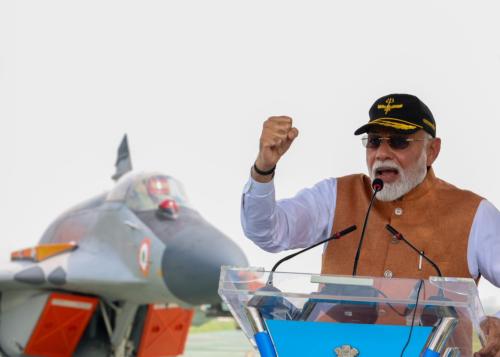The understandable outrage at the release of convicted terrorist Abdel Baset al-Megrahi, found guilty of the bombing of Pan Am 103, should not overshadow the memory of the trial that brought Megrahi to justice. It was an extraordinary example of international cooperation, justice, and diplomacy.
Early in the morning on May 3, 2000, I approached the compound in Zeist, the Netherlands, where the trial took place. As U.S. Ambassador to the Netherlands, I believed that the Embassy in general, and myself, in particular, needed to act as hosts for the Lockerbie victims’ families who were attending the trial. These families had waited a long time – nearly fifteen years – since the fateful day, Dec. 21, 1988, when Pan Am 103 was destroyed by a bomb, taking with it the lives of all 243 passengers, 16 crew, and 11 people on the ground in Lockerbie, Scotland, where the remnants of the plane fell.
Entering the compound was a surreal experience, since inside the gates all officials spoke in a thick Scottish brogue. In the middle of the Netherlands, a Scottish court, established and funded by the U.S., Great Britain, and the Netherlands, tried the two Libyans accused of the bombing according to the rules of Scottish law.
The families had pressed U.S. officials for justice since 1988, but they only began to get results from President Bill Clinton and Secretary of State Madeleine Albright, whose creative diplomacy led to a deal brokered by Nelson Mandela whereby Muammar al-Gaddafi rendered the two accused to a third party country . Negotiations led to the establishment of a Scottish court in the Netherlands, known for its leadership in international justice. The legal staff at the U.S. Embassy worked for over a year with Dutch, British, and Scottish counterparts to set up the court. With typical Dutch modesty, then Prime Minister Wim Kok demurred when I thanked him for hosting the trial, saying simply that “it seemed the right thing to do.”
On the evening before the trial, the U.S. Embassy hosted a reception in Zeist for family members of victims. I had insisted on this gesture of hospitality, against the judgment of a number of Embassy officers who feared the legendary hostility of the Lockerbie families towards the U.S. government. Over beer and hapjes (traditional Dutch hors d’oeuvres), we welcomed the families, and told them that the Embassy was at their disposal. The gathering broke up into many conversations — some about the tragedy, others about home towns, the weather – whatever. At the end of the evening, the families thanked us, saying that this reception was the nicest thing the U.S. government had done for them in twelve years. All we did was connect with them, and listen to their stories.
Over the eight month course of the trial, many members of the U.S. Embassy in The Hague spent time in Zeist, to experience history in the making, and to visit with the victims’ families. At the end of every day, a member of the Embassy legal staff or one of our colleagues from the Justice Department explained the proceedings to the family members. Some families stayed for the duration of the trial; others came once or twice. Whether we saw them frequently or only once, the families deeply touched those of us from the Embassy who were privileged to know them.
The sense of relief families felt over the verdict of life imprisonment against Megrahi was tainted by the images of his exonerated co-defendant Lamin Khalifah Fhimah being given a hero’s welcome as he landed in Libya. I hate to think of the families’ pain now upon seeing Megrahi board a plane – as their loved ones did with Pan Am 103 – and land to cheering crowds in Libya.
Still, I hope that this travesty of justice will not forever tarnish the memory of that noble experiment in international cooperation and diplomacy that was the Lockerbie trial.
The Brookings Institution is committed to quality, independence, and impact.
We are supported by a diverse array of funders. In line with our values and policies, each Brookings publication represents the sole views of its author(s).



Commentary
Op-edThe Lockerbie Trial: A Unique Moment in International Justice and Diplomacy
August 21, 2009